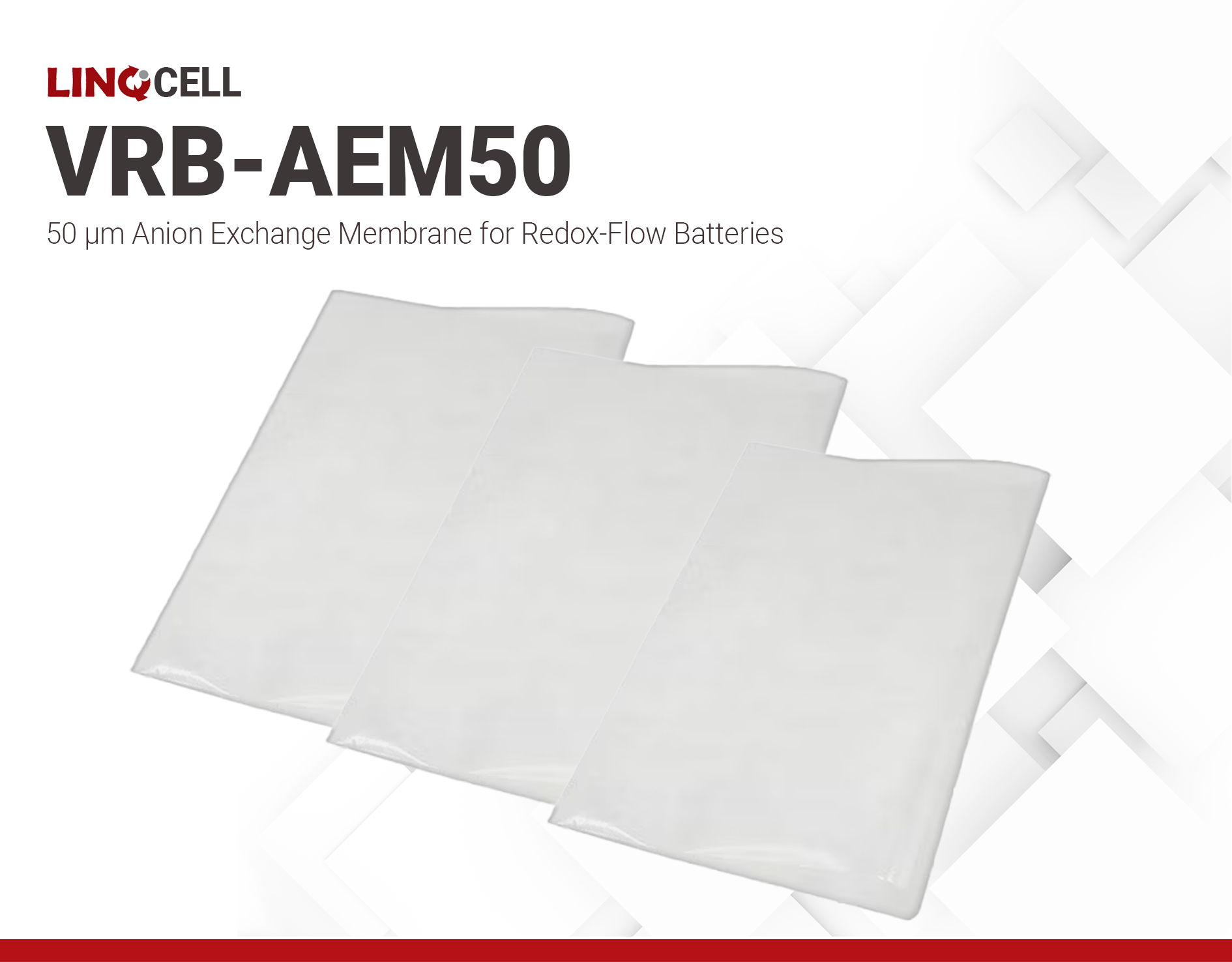LINQCELL VRB-AEM50
- Low ohmic resistance
- Excellent oxidative stability and chlorine resistance
- Designed as ion exchange membranes for redox flow batteries
Product Description
LINQCELL VRB-AEM50 is a 50-µm partially fluorinated anion exchange membrane without reinforcement. It has low ohmic resistance, excellent mechanical properties, low water uptake, and minimal dimensional swelling. VRB-AEM50 has high oxidative stability, resists chlorine, and remains stable in acidic environments (pH > 4). The recommended operating temperature is from room temperature to 50 °C.
LINQCELL VRB-AEM50 is highly suitable for electrochemical applications that require exceptional oxidative stability and chlorine resistance, such as redox flow batteries operating with very harsh, aqueous acidic solutions.
Key Features and Benefits:
- Low Resistance: Facilitates efficient ion transport, minimizing energy losses and maximizing device performance.
- High Vanadium Ion Blocking Capability: Significantly reduces vanadium crossover in Redox-Flow Batteries, ensuring prolonged operational lifespan and enhanced efficiency.
- High Acidic Stability: Maintains its integrity and performance in harsh acidic conditions, crucial for applications like Vanadium-Redox-Flow Batteries (VRBs).
Highly Recommended for:
- Vanadium-Redox-Flow Batteries (VRBs)
- Aqueous Acidic Redox-Flow Batteries.
LINQCELL VRB-AEM50 comes in different sizes to meet various device design requirements. Contact us for custom sizes or other specific requirements.
Technical Specifications
| General Properties | |||||
| Appearance Appearance Appearance at room temperature. | Transparent | ||||
| Total Thickness Total Thickness Total thickness is taking into account all the films, coatings, adhesives, release liners and special layers and is the maximum thickness of a film or tape. | 44 - 56 μm | ||||
| Physical Properties | |||||
| Young's modulus | 750 MPa | ||||
| Mechanical Properties | |||||
| |||||
Additional Information
LINQCELL VRB-AEM50 Properties
| Property | Value | Unit |
| Initial Form | Dry film with no counter-ions | — |
| Backing Foil | Polyethylene terephthalate (PET) | — |
| Area-specific Resistance in 0.5M H2SO4 | < 0.5 | Ω•cm2 |
| Ion Selectivity 0.1/0.5 mol/kg KCl at 25°C | > 90 | % |
| Swelling Ratio in 2M H2SO4 at 25°C | < 16 | % |




